Unpacking the Difference Between Interest Rate and APR
Decoding the APR Interest Rate: A Surprising Overview
When you dive into the world of homebuying, you’re bound to be dazzled, if not a little dazed, by all the financial lingo thrown your way. Two terms that cause quite a stir are interest rate and APR (Annual Percentage Rate). Now, let’s cut through the noise and make it crystal clear: your APR isn’t just your interest rate in a fancy suit. It’s the full cost of your loan, including that interest rate, sure, but also the less-glamorous fees and additional costs rolled into your mortgage soup.
Think of APR as your loan’s yearbook photo—it’s trying to give off the best, most complete impression. Imagine you’re comparing two lenders—Wells Fargo and Bank of America. Both might offer you a loan with a 4% interest rate, but the former tacks on lower fees than the latter. While the interest rates are twinning, APR steps in, the lens revealing the whole picture, including those fees, and — bam! — Wells Fargo’s APR turns out lower.
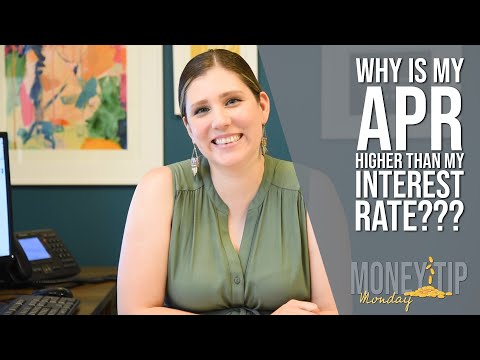
Interest Rate and APR Difference: What Your Lender Might Not Tell You
Hear this: interest rates are the bait lenders lay out to snag your attention. They’re like the hook in a catchy tune—undeniably alluring but not the whole song. This rate represents the yearly cost of borrowing your loan amount, sans the extra frills, or in mortgage terms, fees.
Lenders, bless their hearts, have their own little kitchen where they cook up your interest rate, spicing it up with factors like your credit score and the economy’s mood swings. Now think of Chase and Quicken Loans strutting their stuff, showcasing those seductive low-interest rates in their glitzy ads. While they have you tapping your feet to the low-rate jingle, the APR waits backstage, a tad neglected, yet holding all the details of the true cost of your loan.

APR Mortgage Secrets: The Costs Behind the Curtain
Speaking of details, let’s shine a spotlight on the costs loitering behind that APR curtain. APR mortgages include the tantalizing interest rate, yes, but they’re also shouldering a backpack full of other fees—think broker fees, the dreaded closing costs, and yes, the ever-vigilant private mortgage insurance (PMI), if you’re not plunking down 20% upfront.
These charges, silent but significant, can bridge a hefty chasm between the interest rate and the APR. For example, Rocket Mortgage might offer a home loan with a competitive interest rate and U.S. Bank may have similar rates, but when the APR is revealed, due to varying fees, the difference can be as stark as a scene change between a thriller and a rom-com.
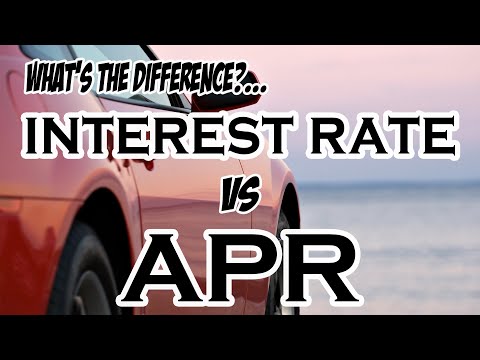
Is APR the Same as Interest Rate? Busting Common Myths
Nope, no way, not a chance—is APR the same as interest rate? That’s like mistaking Arnold Schwarzenegger for his son, Joseph Baena, as highlighted in Twisted Magazine. Related, sure, but not the same. While the interest rate is about the borrowed dough, APR is that plus the whole kitchen pantry of costs.
This mix-up can skew a borrower’s decision-making, leading them to choose a mortgage based purely on the interest rate dazzle. Financial advisors will wag their fingers, citing tales of borrowers caught unawares, who later realize the cost-comprehensive APR was the figure to eye all along.
What is the Difference Between Interest Rate and APR: Calculations that Matter
Alright, put on your math cap—it’s calculation time. Knowing How do You figure out Your APR can keep you one step ahead in the mortgage game. You can find savvy mortgage calculators on NerdWallet or Bankrate that make the numbers dance for you. They’ll show you that while an interest rate might just focus on the principal, the APR throws its arms wide to include that plus any fee in its path, proportioned over the loan term.
Take a current mortgage product from a top lender: if the interest rate alone seems like a delightful dessert, the APR might remind you that you still have to eat your veggies—that is, pay those additional fees and costs.
Understanding Rate Def in Real-Life Applications
Now, don’t get your wires crossed—terminology can get tangled. Rate def, as described on Mortgagerater, is about getting the definition of rates straight. Interest rates on auto loans, for example, are the annual cost minus extra fees, while APR brings all those costs into the fold.
This financial lexicon isn’t just for show or confined to mortgages—credit cards, auto loans, they all have their own versions of these rates. Mastery of this language will steer you clear of money traps and earn you nods of respect from finance buffs.
APR vs Interest Rate: The Long-Term Financial Impact
It’s not just about the now—APR vs interest rate locks horns over the course of your entire loan term. Pick a 15-year versus a 30-year mortgage with lenders like Ally Bank or SunTrust, and you’ll see how over the years, the APR’s inclusiveness might crown it the costlier option, despite a seemingly attractive interest rate.
Financial gurus will pontificate on the merits of considering both these numbers when cherry-picking loans. With the lending landscape ever-shifting beneath our feet in 2024, it’s a game of strategy and, above all, informed choices.
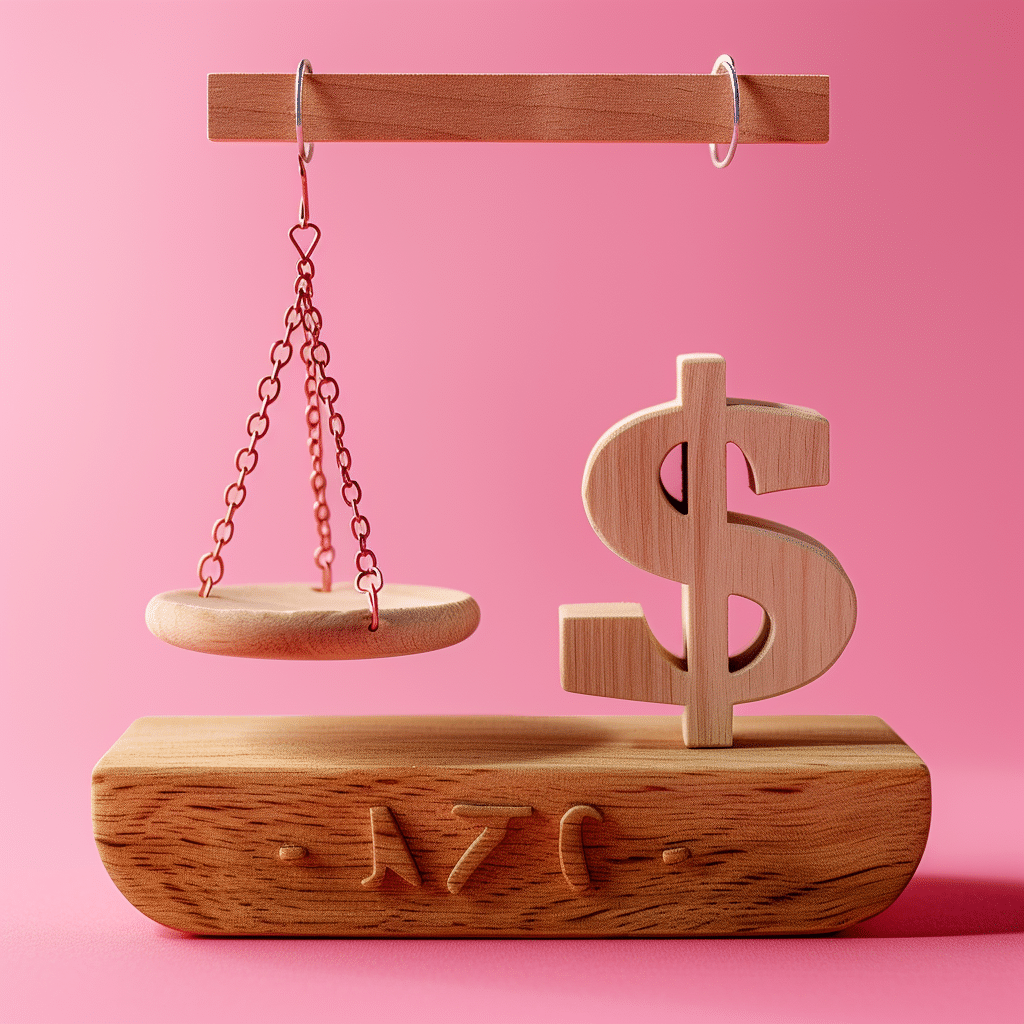
Conclusion: Reflecting on the APR and Interest Rate Conundrum
So, there you have it—the stark difference between interest rate and APR laid bare. It’s not just fine print or a mortgage enigma; it’s about unearthing the full cost of your borrowings, head to toe. Grasping this can make you the zen master of mortgage moves, turning knowledge into negotiating power and, ultimately, wise decisions.
Your financial health deserves this transparency. So next time a lender flirts with just an interest rate, ask for the full story—the APR. And maybe, with a collective call for forthrightness in lending, the curtain will stay up, and borrowers won’t have to play detective quite so hard.
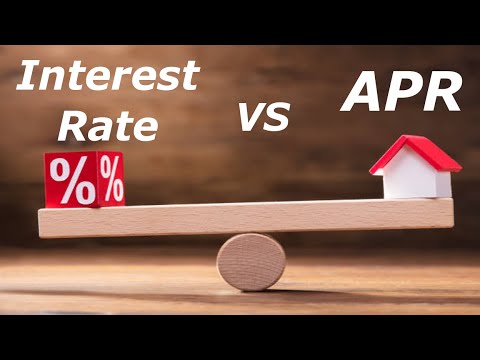
With eyes wide open to these realities, you’re now equipped to stride into the mortgage market with confidence. And remember, the story of your loan is much richer and more textured than just the seductive whisper of an interest rate—it includes all the compelling layers that APR brings to the table. Armed with this understanding, you’re ready to conquer the homebuying stage like the lead character in a blockbuster. Just like the complexity hidden within the cast of Matilda the Musical, as explored on Silver Screen magazine, your mortgage has many parts to play in your financial narrative. Take control, and make sure it’s a story with a happy ending.
Uncovering the Difference Between Interest Rate and APR
So you’re digging through mortgage documents for the umpteenth time, feeling like you’re trying to crack a code in one of the best true crime Podcasts. But hold your horses, did you know that the terms ‘interest rate’ and ‘APR’ aren’t just fancy finance jargon meant to scramble your brain? Let’s dive into some crazy yet enlightening facts that’ll make these concepts as easy to understand as your ABCs.
Did Someone Say Free Money?
Well, not exactly free. But when you hear about interest rates for the Fiest time, you might be tempted to think that’s all there is to your mortgage cost. Think of the interest rate as the price tag for borrowing that stack of cash to snag your dream home – it’s the basic percentage that your lender slaps on every year.
The Whole Enchilada: APR
Hold your horses! Before you run thinking you’ve got the whole picture, let’s talk about Whats apr mean. APR, or Annual Percentage Rate, is like the behind-the-scenes crew member that doesn’t always get the spotlight, kinda like how Alyson Hannigan gave life to her roles. It’s the bigger, bolder number that swoops in and includes not just the interest rate, but all the other costs like broker fees, closing costs, rebates, and any other tidbits charged.
Interest Rates Have a Fan Club
Interest rates might get all the attention—like how Jim Skrip caught our eyes—but APR is the unsung hero. Knowing just the interest rate on your mortgage is like reading the headline but skipping the article. You’re not getting the full scoop! Interest rates can be flirty, showing you a lower cost initially, but it’s the APR that’ll stick with you through the long haul of your mortgage life.
APR: The Crystal Ball of Your Mortgage
Peering into the APR is like having a crystal ball that gives you a glimpse into the true cost of your loan. It reflects the reality of the fees you’ll fork over in addition to the interest. It’s pretty much the full monty of loan costs, giving you the whole truth and nothing but the truth.
The Teeter-Totter Effect
And just when you thought it was all serious business, here comes the fun part. Think of the difference between interest rate and APR as a playground teeter-totter. The interest rate sits on one end—yeah, it’s important, but it’s only part of the game. On the other end sits APR, balancing the scales by including all the additional fees. To have a smooth ride, you need both ends in harmony. Knowing both numbers keeps you from getting flipped head-first into unexpected costs!
So, next time you’re about to snooze on those terms, remember: understanding the difference between interest rate and APR can save you some serious cheese, and who doesn’t love saving money? Embrace your newfound knowledge, and go conquer that mortgage with the gusto of a trivia night champ!
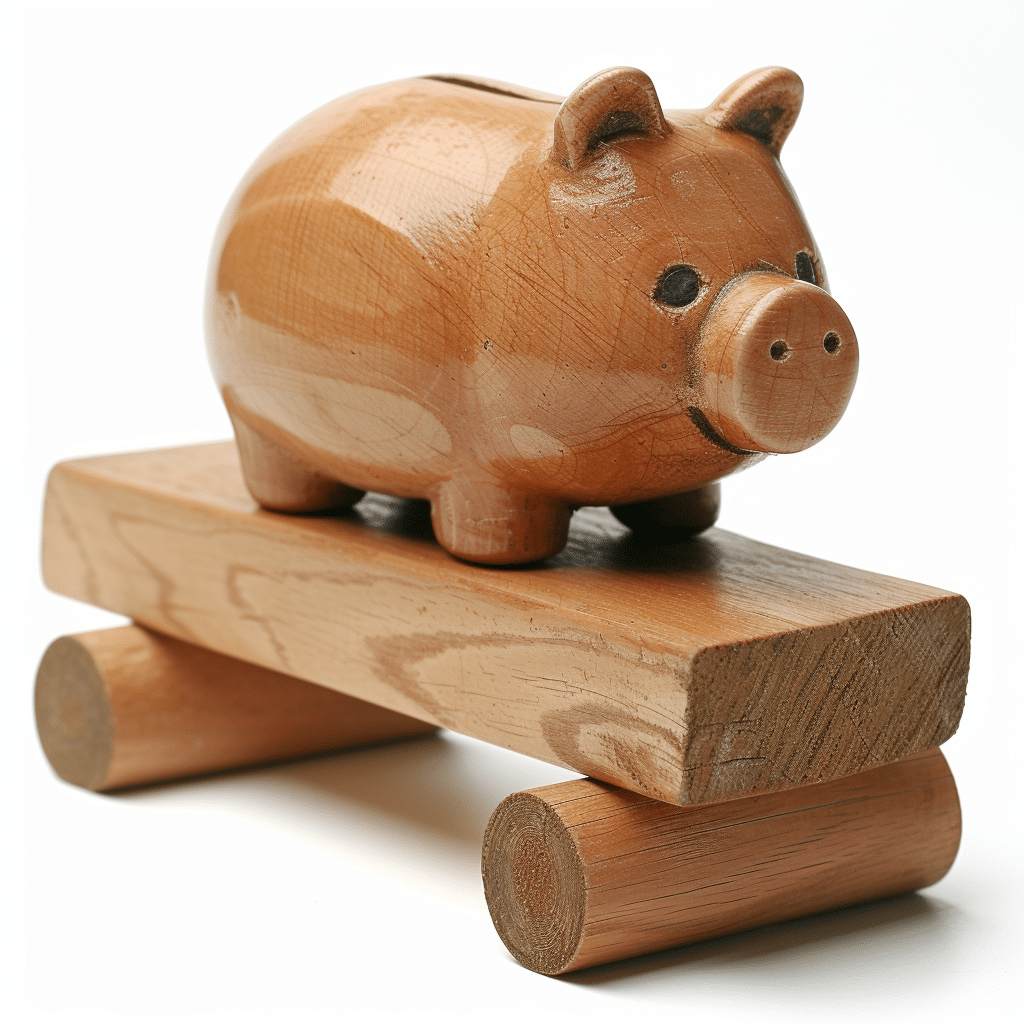
Which is better APR or interest rate?
– Well, when you’re wading through the alphabet soup of finance, you’ll find APR and interest rate are like two peas in a pod, but one’s got a bit more meat on its bones. The APR not only includes the basic interest rate but also throws in any additional fees and costs, making it the whole enchilada of loan costs. So, which is better? Like comparing apples and oranges, it really boils down to your unique financial stew – APR gives you the bigger picture, making it a robust choice when you want to compare the true cost of loans.
Is APR and interest rate the same credit card?
– Hold your horses, credit card shoppers! An APR on your credit card is like the interest rate’s bigger, more tell-all cousin. While they sound like twins, your credit card’s interest rate is just part of the APR story. Remember, APR includes all the extra fees and charges. So when you see that APR on your credit card statement, it’s not just the interest rate talking – it’s the whole membership fee shebang.
What is the difference between APR and fixed interest rate?
– Ah, the ol’ APR vs. fixed interest rate debate! Think of a fixed interest rate like your favorite old t-shirt – comfortable and unchanging. It’s the rate you pay on your loan, and that’s that. No surprises. On the flip side, APR is like that t-shirt, plus the jacket, scarf, and hat you need for the changing seasons – it’s the rounded-out cost of your loan each year, with all the extras thrown in. So, difference? It’s like night and day – a fixed interest rate is just one piece, while APR is the whole outfit.
Is 35 APR high for a personal loan?
– Oh boy, if you’re staring down a 35% APR on a personal loan, you might feel like you’re in a financial fog. That APR is sky-high, and here’s the kicker – rates like that could mean your loan is more like a money pit. We’re talking the upper crust of loan rates, often nestled in when credit’s tight, or the lender’s taking a gamble. So, is it high? High as a kite on a windy day, my friend.
Do you pay both APR and interest rate?
– Here’s a pickle—do you pay both APR and interest rate? In the loan game, it’s the APR that steals the show—it’s your interest rate bundled up with all those loan-related fees. Think of APR as your loan’s full price tag — you swipe, you pay. So, while the interest rate is part of the package, it’s your APR that tells you what you’re really forking over each year.
Why is APR so much higher than interest rate?
– Well, you might wonder why APR waves its arms around, shouting “Hey, look at me!” louder than your interest rate. Here’s the scoop: APR is like interest rate’s bossier big brother—it’s packing not just the interest, but also the plethora of fees and secret handshakes (read: points, broker fees, etc.) that come with borrowing cash. That’s why your APR is puffing its chest—it’s loaded with more than just the interest.
What is 24% APR on a credit card?
– Got a credit card flaunting a 24% APR? That’s how much the plastic is costing you annually. That’s right, that little piece of card is not just for swiping—it’s like a taxi meter that keeps ticking over at a rate of 24% a year on your debt. Swipe with care, because a rate like that can turn that shopping spree into a costly ride!
Does 0 APR mean no interest?
– Zero APR is like a party with no cleanup – no interest means the cost of borrowing money is on a holiday. But don’t confuse it with a free lunch; the no-interest fiesta usually has a time limit before the regular rates kick in. So, while 0% APR sounds like a sweet deal, remember to mark your calendar; when the clock runs out, it’s back to business as usual!
How do I get my APR lowered?
– Want to slim down your APR? It’s a bit like haggling at a garage sale – you’ve got to roll up your sleeves and make your case. You could call your lender and serenade them with your timely payments and good credit; they just might serenade you back with a lower rate. Or, shop around – nothing speaks louder than a better offer from across the street.
What does 99.9% APR mean on a loan?
– When you see a 99.9% APR, you might think you’re seeing things, but nope, it’s right there in black and white. It means the cost of your loan is basically turning the borrowing world on its head – almost doubling what you borrow every year in costs! So, if you’re tangled up with a rate like that, it’s not just a red flag; it’s a fireworks show warning you this loan could cost you a pretty penny.
What is a good APR rate?
– You’re on the hunt for a good APR like it’s a four-leaf clover. Well, a rate that won’t break the bank hovers around what’s average, considering the economy and your credit score. A good APR generally is a lot closer to a pebble than a boulder when compared with the national average, and, of course, the lower, the better – lending a bit of magic to your wallet.
Does APR apply if I pay on time?
– Pay on time and think that APR doesn’t stick its nose into your business? Well, not quite. APR’s like the shadow that follows you – whether you’re early, on time, or late. The good news is, if you’re as punctual as a watch on your payments, you won’t see interest pile up. Still, that APR is playing the long game – it’s factored in regardless, but staying on track keeps it from raining on your parade.
Is 7% a bad APR?
– Eyeing a 7% APR and wondering if you’ve hit a sour note? It’s not exactly a stroll in the financial park, but it ain’t a downpour either. That APR’s decent for personal loans – compared to the scary-high rates out there. So, while you might aim for less, if your credit’s still playing catch-up, 7% can be pretty fair play.
Why is my APR so high with good credit?
– Having good credit but a high APR’s like wearing a raincoat in a drizzle – something’s not lining up. There could be that your lender’s just playing hardball, or your loan has extra frills that bump up the cost. It’s worth a chat with your lender or a peek at other offers. There might be room to trade in for a better deal.
What interest rate can I get with a 720 credit score?
– Got a 720 credit score and itching to know what rate you’ll snag? Well, that’s a golden ticket in the credit world! With numbers like that, you’re pretty much in VIP territory. You can generally expect to land an interest rate that’s the cat’s pajamas – near the low end of the spectrum. Now, the exact figure can flip-flop with the market, but rest assured, 720’s got the magic touch.
What is a good APR rate?
– A good APR is like a hidden treasure in the loan world – it’s the kind you’d write home about, because it’s comfortably below the national average. With a stellar APR, your loan feels like a gentle breeze instead of a gale force wind, giving you some smooth sailing through your financial waters.
Why would APR be lower than interest rate?
– ‘Lower than low’, they say about that APR – but why, oh why, would it dip below the interest rate? Here’s the kicker: if a lender is doling out a promotional rate like candy at a parade, or you’ve got upfront discounts that are stealing the show, your APR might just waltz right under the interest rate. It’s all about those special circumstances that can turn the tables in your favor.
Is higher APR better for credit score?
– “Does a higher APR buff up your credit score?” Now, that’s a twisty question. While you might think a higher APR is as unwelcome as a skunk at a lawn party, it’s actually not directly related to your credit score. Your score cares about you paying on time, not how much you pay. Remember, a good credit score is more about keeping it steady and on time, rather than the cost of borrowing.
What is a good APR for a car?
– When it comes to a good APR for a car, we’re talking about numbers that make you, and your wallet, feel like you’re cruising down Easy Street. Aim for an APR that’s revving below the national average, given your credit score’s horsepower. Keep in mind, a rate that’s tailor-made for your budget makes for the smoothest ride on the payment highway.



